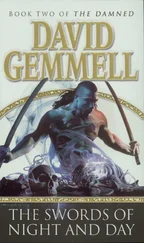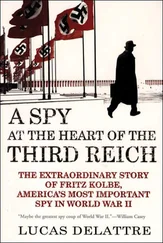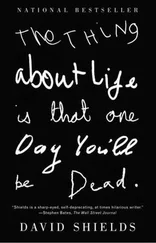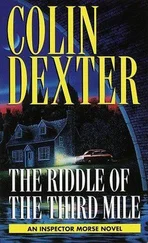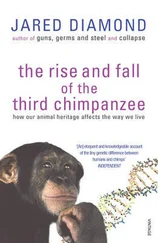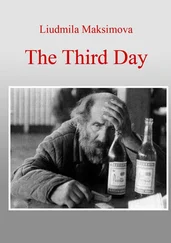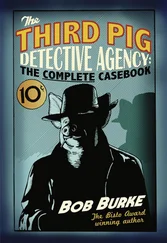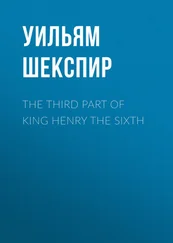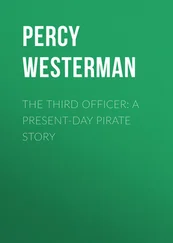David Epperson - The Third Day
Здесь есть возможность читать онлайн «David Epperson - The Third Day» весь текст электронной книги совершенно бесплатно (целиком полную версию без сокращений). В некоторых случаях можно слушать аудио, скачать через торрент в формате fb2 и присутствует краткое содержание. Жанр: Фантастика и фэнтези, на английском языке. Описание произведения, (предисловие) а так же отзывы посетителей доступны на портале библиотеки ЛибКат.
- Название:The Third Day
- Автор:
- Жанр:
- Год:неизвестен
- ISBN:нет данных
- Рейтинг книги:3 / 5. Голосов: 1
-
Избранное:Добавить в избранное
- Отзывы:
-
Ваша оценка:
- 60
- 1
- 2
- 3
- 4
- 5
The Third Day: краткое содержание, описание и аннотация
Предлагаем к чтению аннотацию, описание, краткое содержание или предисловие (зависит от того, что написал сам автор книги «The Third Day»). Если вы не нашли необходимую информацию о книге — напишите в комментариях, мы постараемся отыскать её.
The Third Day — читать онлайн бесплатно полную книгу (весь текст) целиком
Ниже представлен текст книги, разбитый по страницам. Система сохранения места последней прочитанной страницы, позволяет с удобством читать онлайн бесплатно книгу «The Third Day», без необходимости каждый раз заново искать на чём Вы остановились. Поставьте закладку, и сможете в любой момент перейти на страницу, на которой закончили чтение.
Интервал:
Закладка:
“Fair enough,” I said.
“Then we take preliminary measurements of the long bones and x-ray everything.”
“That would have picked up the pin, wouldn’t it?”
“That’s correct, if our equipment had been working. Our machine broke down a few days earlier, but the local hospital had priority access to the parts we needed. Getting it repaired took over a week.”
“That’s when you found the pin?”
“Yes, but by then that was only one of many anomalies,” said Lavon.
Dichter continued, “From the femur length, we estimated the man’s height at 185 centimeters. That’s six foot one to you Americans; tall for the era, but not Goliath.”
From my recollection of Henry Bryson, that sounded about right.
“Once we did that,” Dichter said, “we took random samples of the bones and calculated a preliminary age using a standard radiocarbon process. In this case, the results dated consistently to the first century, with a margin of error plus or minus a decade or two.”
“This all seems rather straightforward,” I said. “When did you first suspect that you were dealing with something out of the ordinary?”
Dichter reached up to grab a bright circular lamp, similar to the type found in a dentist’s office. He turned the skull toward me and focused the light.
“Let’s see if you can do any better than I did,” said Lavon. “Tell me if you notice anything unusual.”
I studied the skull for a couple of minutes, but nothing looked terribly out of place. “I can’t see anything,” I finally said.
“Count the teeth,” Lavon instructed.
I did so. “23.”
“The normal adult human has 32,” said Dichter.
“Right, but didn’t everybody lose teeth two thousand years ago?” I asked.
Dichter and his assistant both laughed. “Robert said the exact same thing.”
I examined the skull again. The odd thing was, I saw no gaps between the teeth that remained.
“Ah,” said Dichter. “Now we’re getting somewhere.”
“That’s what we first noticed,” said Lavon. “Plus the loss of teeth is symmetrical. The bicuspids are missing, top and bottom, as are the wisdom teeth.”
“The left side of the upper jaw is missing one more,” I said.
“The second molar,” replied Dichter. “We extracted that one ourselves to run a separate test, using the Electron Spin Resonance method as opposed to radiocarbon. ESR is ideally suited to dating tooth enamel, but it requires input in powdered form.”
“We had to grind it up,” said Lavon.
“And?” I asked.
“First century, more or less. ESR is not as accurate as radiocarbon, but the tooth was definitely not modern.”
***
None of us spoke for a while as I considered this.
“Now you know what we’re up against,” Dichter finally said. “Until a few years ago, orthodontists regularly pulled teeth before installing kid’s braces, but I’ve never heard of such a thing in the ancient world.”
“I’m not sure I’d want to,” Lavon joked.
I certainly didn’t.
“Could someone have grafted the teeth in later, like, um …”
“Piltdown Man?” said Lavon.
Both archaeologists laughed. “Discovered” by an English professor in 1912 and heralded for years as the missing link between ape and human, Piltdown Man remained one of archaeology’s most well-known frauds. Later examination revealed the specimen to be an orangutan’s jaw with chimpanzee teeth, attached to a medieval skull.
“I don’t think so,” said Dichter. “This jaw showed no signs of tampering at all. Although it took scientists forty years to prove Piltdown a hoax, we’d spot the same thing in minutes today.”
“That just means the fraudsters have to be smarter,” I said.
Lavon and Dichter laughed again. “They are.”
The trade had become a never-ending game of cat-and-mouse. A renewed interest in ancient history, compounded by rising affluence across the globe, had created a growing pool of new and relatively unsophisticated buyers.
“In our world, demand begets supply,” said Dichter. “Do you remember the James Ossuary from a few years ago?”
I vaguely recalled the story: something about a box of bones that supposedly belonged to Christ’s brother.
“It got so much publicity because if authentic, it would have been the first physical reference to Jesus directly traceable to the first century,” said Dichter.
“But not long afterward, the IAA — the Israel Antiquities Authority — raided a warehouse owned by the ossuary’s discoverer. Inside, they found dozens of so-called artifacts, along with the tools the man and his associates had used to create them. Later investigations revealed that this gang had been running a forgery ring for twenty years.”
“That crew was in it for the money, but sometimes, people conduct hoaxes for more personal reasons,” Lavon added.
“When we start out in this business, we all dream of excavating spectacular ruins and recounting our finds to rapt audiences of society’s movers and shakers at the Met. But not everyone’s career turns out the way they expected it to in graduate school. It can be awfully tempting to cross that line, even if it’s just to make somebody you don’t like look like a total fool.”
I sighed. “Like now, for instance.”
“Yes,” said Dichter, “though I can’t imagine who could be behind this. None of us have publicized our findings, and the only artifacts found at the site, other than the skeleton and what’s left of the clothing, were a handful of Roman coins.”
I glanced at Lavon, who walked over to one of the laptops and tapped a few keys before turning the screen toward me.
“An authentic Roman denarius ,” he said. “Ten bucks on eBay.”
“They’re nothing special,” said Dichter.
This was news to me, though it would explain how Bryson had obtained them — if these bones truly were his.
“You mentioned other anomalies?” I asked.
“I’m not sure I’d call them that,” said Dichter. “It’s just that whoever this man was, he was remarkably healthy for someone in the first century. Obviously he was a member of the upper class, but even for this type of person, I’ve never seen a skeleton so free of any signs of infectious disease.”
“You can tell that from the bones?”
Both Lavon and Dichter nodded.
“Amazing,” I said.
And it truly was. I had no idea the science had advanced that far.
“Just out of curiosity, how old was this man when he died?”
“I’d say late forties, early fifties, thereabouts.” Dichter replied.
He directed my attention back to the skull.
“These zig-zag patterns are called ‘sutures.’ The skull of a newborn is flexible, to make birth easier, and the sutures join up and fuse as the person grows older.”
The assistant adjusted the light so I could see them better.
“The frontal suture, this one, closes when a child is quite young. Others begin to close between the ages of twenty and thirty, and the last ones, back here, don’t fuse completely until the person reaches seventy.”
Once again, this was in the ballpark.
I racked my brain trying to come up with alternative explanations for what I was seeing, but this proved to be a futile exercise. I simply couldn’t think of any.
Chapter 7
We tossed ideas around for a little while longer and then I bought Jonathan and his crew lunch, to thank them for their trouble. Afterwards, Lavon and I hopped in the car and headed for Jerusalem, less than forty miles away.
I didn’t expect to learn anything new at their dig site, but I needed to be able to say I had crossed every “t” and dotted every “i” before writing my final report to Markowitz, assuming I decided to write one after all.
Читать дальшеИнтервал:
Закладка:
Похожие книги на «The Third Day»
Представляем Вашему вниманию похожие книги на «The Third Day» списком для выбора. Мы отобрали схожую по названию и смыслу литературу в надежде предоставить читателям больше вариантов отыскать новые, интересные, ещё непрочитанные произведения.
Обсуждение, отзывы о книге «The Third Day» и просто собственные мнения читателей. Оставьте ваши комментарии, напишите, что Вы думаете о произведении, его смысле или главных героях. Укажите что конкретно понравилось, а что нет, и почему Вы так считаете.

